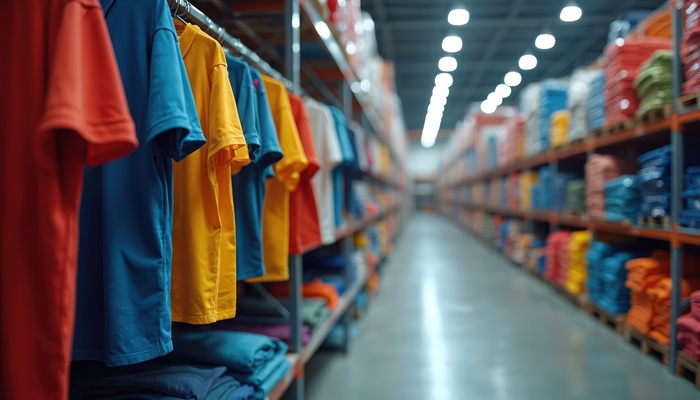
Cross-Industry Lessons: What Fashion Logistics Can Teach Food Retail
Table of Content
The Value of Cross-Sector Intelligence
While the two industries operate with vastly different core products—perishables versus apparel—the modern logistics challenges of fashion and food retail overlap significantly in complexity, volume, and customer expectation. The fashion sector, particularly in e-commerce, has long served as a proving ground for solving problems now emerging as major pressure points in grocery stores: extreme SKU variability, rapid inventory rotation, and high-stakes fulfillment speed.
Where fashion mastered the movement of millions of unique items quickly to meet seasonal trends, food retail now faces the same pressure in fulfilling complex, multi-item online grocery orders. Food retail operators are beginning to find significant value in reverse-engineering the agility and efficiency practices perfected in fashion fulfillment. The strategic adoption of systems engineered for high-velocity, high-SKU environments, driven by advanced warehouse automation, provides a blueprint for resilience and profitability in the grocery supply chain.
Dynamic Inventory Visibility and Rotation
Fashion fulfillment has pioneered highly dynamic inventory tracking across multiple sales channels and touchpoints, adjusting product availability and stock location in real time. This granular precision is vital for managing seasonal collections and unpredictable demand spikes—capabilities that are directly transferable to the perishables and promotional cycles of grocery stores.
In the food sector, spoilage and markdowns are significant cost drivers. By applying the real-time visibility and stock rotation intelligence developed in fashion and apparel logistics, grocery logistics can achieve:
- First-Expiration-First-Out (FEFO) Automation: As fashion prioritizes faster-selling sizes and colors, food logistics can use real-time data from a Warehouse Management System to enforce strict FEFO protocols. This minimizes waste by ensuring products closest to their expiration date are picked first, a system far more complex and essential than simple First-In, First-Out (FIFO).
- Markdown Optimization: Real-time visibility allows for intelligent discounting strategies for fresh products based on stock levels and remaining shelf life, minimizing losses from products that might otherwise expire in a manual process.
- Seamless Channel Management: Effective fashion fulfillment systems manage inventory as a fluid asset that is available across all channels (store, online, mobile). Food retail needs this same fluidity to balance stock between shelf replenishment and direct-to-consumer delivery from the same hub. This agility is what defines modern fashion logistics.
From SKU Chaos to System Flexibility
The sheer volume of SKUs in modern apparel—different colors, sizes, and fits—requires logistics systems built for extreme variability. This mirrors the challenge of fulfilling a typical online grocery order, which can contain a dozen different categories, from frozen goods and dry staples to delicate produce and health items.
The key lesson from fashion is that specialized automation is required for speed and versatility. A single automation platform must handle items ranging from a single hang-garment to a small jewelry box. Food retail can adapt this by implementing systems that:
- Accommodate Varying Item Shapes and Weights: Using goods-to-person automation designed to handle high-touch, varied items (like those found in fashion fulfillment), grocery can better manage the complexity of picking small, delicate produce alongside heavier packaged goods.
- Master the Cold Chain: While fashion doesn’t require temperature zones, the principle of creating specialized, high-velocity automation cells for unique handling requirements is identical. Food retail is applying dedicated automation, often in high-density shuttle systems, to manage the distribution center’s deep freeze and chilled areas with speed and reliability, preserving both product quality and energy efficiency.
Micro-Fulfillment Strategies for Perishables
The fashion industry has been a leader in decentralizing inventory, using store networks for fulfillment (ship-from-store), and establishing dense, urban micro-fulfillment centers (MFCs) to meet rapid delivery demands. This concept is now critical for grocery stores, where the last-mile challenge is particularly acute due to the consumer expectation of rapid delivery and the product’s limited shelf life.
In food retail, MFCs located closer to the customer base reduce the distance for last-mile delivery, minimizing time in transit and ensuring better quality control for temperature-sensitive items. The automation deployed in these compact, urban footprints must be high-speed and ultra-dense, replicating the efficient, space-saving shuttle and robotics solutions pioneered for high-throughput e-commerce operations in fashion fulfillment. The operational agility learned from fashion logistics directly enables the profitability of these small-format fulfillment sites.
The Reverse Logistics Imperative
While the percentage of returns is lower in grocery than in fashion, the stakes are arguably higher, as returned perishables often result in total loss due to spoilage. Fashion logistics perfected the operational process of reverse logistics—receiving, inspecting, and rapidly restocking returned items.
For food retail, this lesson translates to mastering the rapid processing of totes and bins from failed or incomplete orders. Automated systems can quickly inspect returns, assess the remaining cold chain integrity, and automatically process credits while diverting viable stock to the appropriate resale or donation channels. Minimizing the cost of returns requires the same rapid decision-making and automated routing fashion used to get a returned dress back on the shelf before the following seasonal markdown.
Scalability Through Layout Intelligence
Fashion distribution centers are inherently designed for rapid, modular scalability to handle volume spikes during holiday seasons or major collection launches. They achieve this by utilizing flexible layouts that allow operators to add modular capacity or reconfigure functional zones—such as packaging or sorting—based on real-time shifts in volume or product assortment.
Grocery operators can take cues from this layout flexibility, which is essential as they balance high-volume shelf replenishment with increasingly personalized, small-batch e-commerce fulfillment under one roof.
Key adaptations for food retail include:
- Strategic Zoning: Designing automated systems that allow zones dedicated to fast-moving dry goods to rapidly expand or contract based on seasonal promotions or buying patterns.
- Vertical Storage: Maximizing vertical density with AS/RS systems to enable scalability without expensive facility expansion.
- Modular Automation: Using systems that allow for the quick addition of vehicles (shuttles, AMRs) to instantly increase picking and sorting capacity when demand surges, a concept critical for the cost-effective operation of grocery logistics. The agility derived from systems built initially for fashion fulfillment is now the roadmap for sustainable growth in grocery warehouses.
The logistics challenges of fashion and food retail may differ in the products they handle, but the underlying mechanics required for agility, visibility, and efficiency apply across both sectors. Cross-industry insights offer a decisive advantage, helping logistics leaders in the food sector shorten their learning curve and strategically deploy automation.
Food retail does not need to replicate fashion’s distribution model entirely. Still, it can—and must—adapt the most effective elements of its fulfillment patterns to achieve the necessary speed and responsiveness. Food logistics can transform its complex operational challenges into a resilient competitive advantage by adopting lessons in dynamic inventory management, scalable system flexibility, and urban micro-fulfillment.
The future of both industries is anchored in warehouse automation that is flexible enough to manage extreme SKU variability and intelligent enough to handle the critical, time-sensitive demands of the modern consumer. The goal is to build an innovative, adaptable infrastructure that transcends industry boundaries, ensuring that every product—from perishable produce to fast fashion—reaches its destination efficiently, reliably, and profitably.



